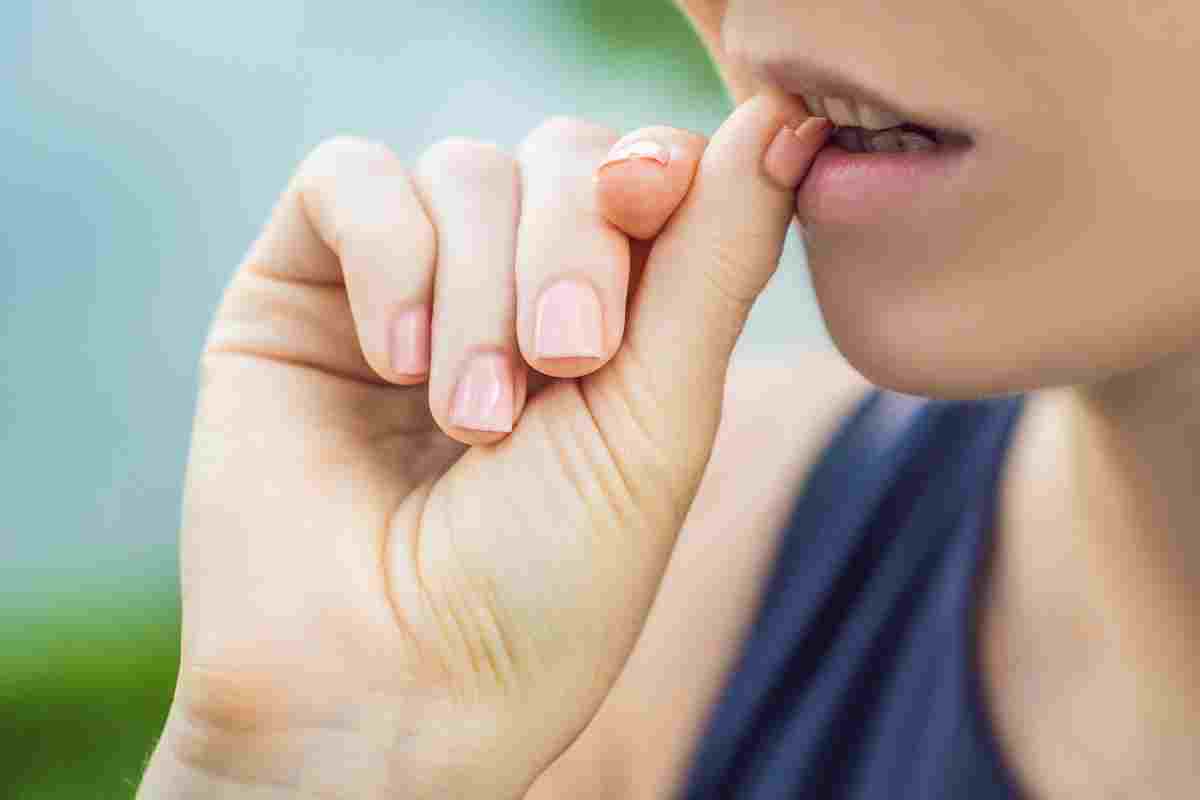How to Stop Biting Nails –The ramifications of nail-biting, which frequently start in infancy and last until adulthood, can go beyond the aesthetic ones. Repeatedly biting your nails can lead to soreness in the surrounding skin and damage to the tissue that causes nails to develop, giving your nails an odd appearance. By spreading infectious germs and viruses from your mouth to your fingers and from your nails to your face and mouth, chronic nail biting can also make you more susceptible to illness.
Table of Contents
To Help you Stop Bitter your Nails, Dermatologists Endorse
Keep your nails trimmed short – Having fewer nails delivers less to bite and is less tempting.
Put on the bitter-tasting nail polish to your nails – This safe but awful-tasting formula is available over the counter and depresses many people from biting their nails.
Get regular manicures – Spending money to keep your nails good-looking may make you less likely to bite them. Alternatively, cover your nails with tape or stickers or wear gloves to prevent chewing.
Replace the nail-biting habit with good practice – When you texture like biting your nails, try playing with a stress ball or silly putty instead. It will help keep your hands full and absent from your mouth.
Identify your triggers – These might be physical triggers, such as the attendance of hangnails, or other motivations, such as boredom, stress, or anxiety. By figuring out why you bite your nails, you can learn how to avoid these situations and develop a plan to stop. Just knowing when you’re inclined to bite whitethorn help solve the problem.
Try to stop biting your nails gradually – Some doctors endorse taking a gradual approach to break the habit. First, try to stop biting one set of pins, such as your thumbnails. When that’s fruitful, eliminate your pinky nails, pointer nails, or even an entire hand. The goal is to get to the point where you no longer bite your nails.
Diagnostic and Statistical Manual of Mental Disorders and Psychiatric Associations
Nail biting may remain expected during childhood; however, the exact criteria for pathologic nail biting are not clearly defined (Ghanizadeh, 2011). The Diagnostic and Arithmetical Manual of Mental Disorders, Fifth Edition, categorizes chronic nail-biting as another specified obsessive-compulsive disorder (OCD), classified in the same group as compulsive lip biting, nose-picking, and hair-pulling (American Psychiatric Association, 2013). The Diagnostic and Statistical Physical of Mental Disorders, Fifth Edition, labels nail-biting as body-focused repetitive behaviour. To meet these diagnostic criteria, patients must have failed attempts at suppressing compulsive behaviour despite negative social impact (American Psychiatric Association, 2013).
How to Stop Biting Nails: Currently,
Studies are inconsistent when comparing the association between OCD and comorbid compulsive nail biting (Halteh et al., 2017). Similar inconsistent data exist when searching for an association between anxiety and nail-biting. For example, a report by Pacan et al. (2014) found that only 25% of patients who suffer from a nail-biting disorder met the criteria for a diagnosis with a comorbid OCD or anxiety disorder. The same study also found a prevalence of 3.1% for OCD in nail biters. Similar to the general population (Pacan et al., 2014). An article by Ghanizadeh (2008) reported that 56% and 46% of mothers and fathers of children with a nail-biting disorder suffer from a psychiatric illness, with depressive disorder being the most common.
Differential Diagnosis
Dermatologists should be aware of nail disorders that can remain mistaken as onychophagia. One such disease is onychomycosis, a fungal nail infection that may lead to discolouration and nailbed destruction. Another nail disorder on the differential is nail psoriasis. Which presents as pitting, nailbed separation, discolouration, and splinter haemorrhages (Jiaravuthisan et al., 2007). Patients may reveal a history of arthritis or cutaneous manifestations of psoriasis, including extensor plaques with scaling. Lichen planus is a mucocutaneous inflammatory disease that may be mistaken for onychophagia (Goettmann et al., 2012). An examination of the fingernails will reveal thin and ridged nail plates. Occasionally excess scar formation over the cuticle may result in a pterygium.
Patients typically have concomitant purple,polygonal papules and plaques along the skin and mucous membranes. Moreover, immune-mediated disruptions are responsible for vasculitides, including leukocytoclastic vasculitis. Patients will present with nail abnormalities, including transverse depressions along the nail and separation of the nail plate. Subungual melanoma is a rare but morbid cause of nail abnormalities that is difficult to diagnose due to subtle characteristics. Such as melanonychia (black or brown discolouration of the nail that extends distally) and extension of pigmentation changes in adjacent skin (Cochran et al., 2014).
Conclusion
Consider implementing the cold-turkey strategy gradually if you’re experiencing problems. Set modest objectives for yourself. For a week, refrain from chewing the nails on your right hand. May begin even more modestly: Pick one pin—perhaps your thumb—that you won’t bite. Place another nail in the “no-biting” zone once you’ve maintained it for a time. Continue until all of your fingers are restricted. If you’ve tried a variety of strategies and you’re still having trouble. Talk to your doctor about if counselling could be a viable choice to help you figure out the root of the issue and stop biting your nails.

